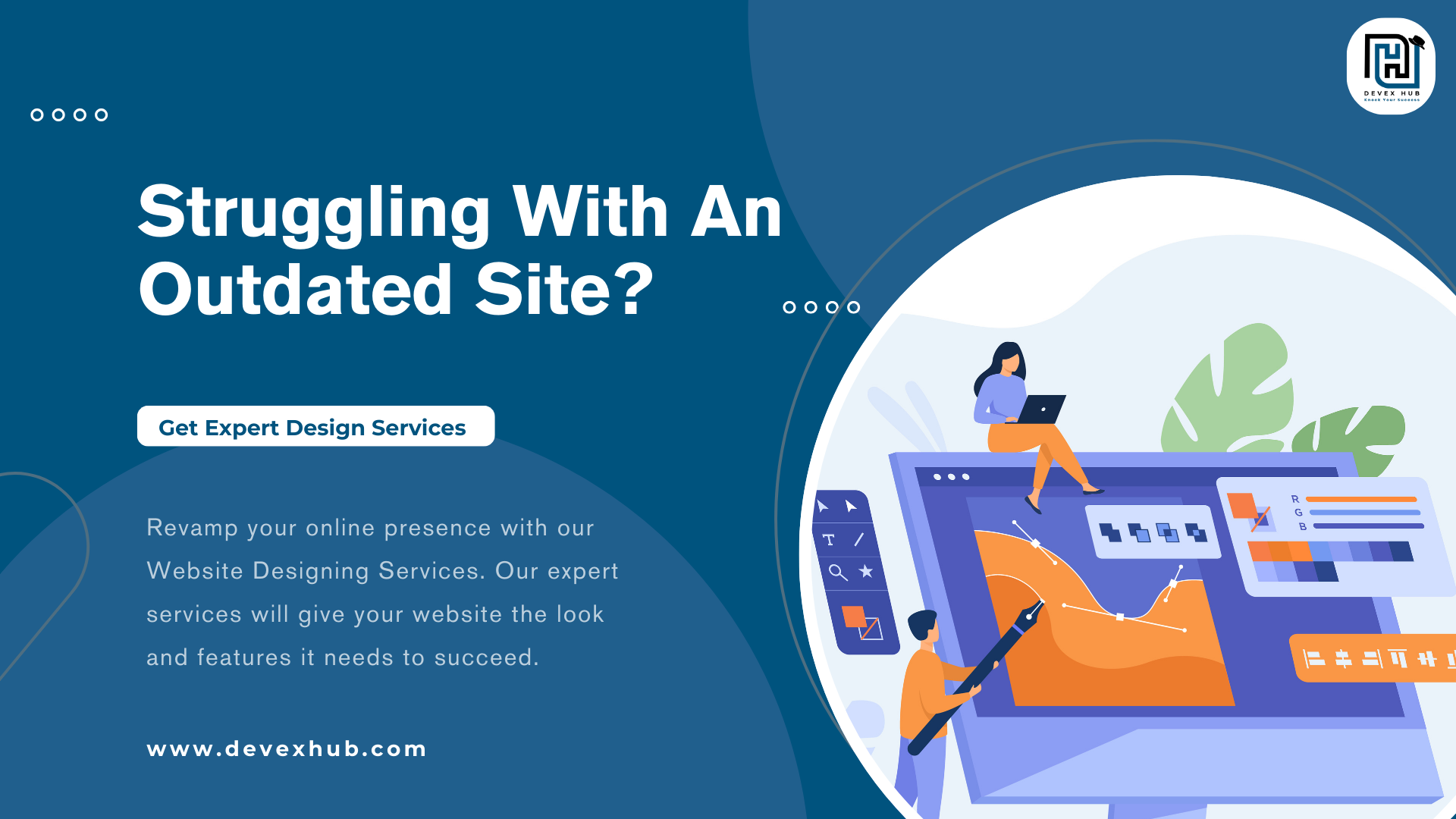How Long Does a Corporate Website Redesign Take? Expert Solutions Guide
.jpg)
In today's digital age, your company website is your storefront to the world. Just like a physical store, it needs to be modern, inviting, and functional to attract and retain customers. But unlike a physical store, a website can quickly become outdated. So, when was the last time you gave your website a refresh? If you're considering a redesign, one of the biggest questions you probably have is: how long will it take?
This guide will give you a clear picture of the corporate website design process, break down the timeframe for each stage, and reveal expert solutions from Devex Hub to help you streamline the project.
Understanding the Website Redesign Journey
A corporate website design isn't just about slapping on a new coat of paint. It's a strategic investment in your company's online presence. The process usually consists of several important stages:
- Initial Consultation and Planning: This is where you meet with a design team to discuss your goals, target audience, and desired website features. They'll also analyze your current website and identify areas for improvement.
- Research and Analysis: The design team will delve deeper, researching your industry, analyzing competitor websites, and understanding your website's current performance (think user traffic and engagement).
- Design Phase: This is where the creative magic happens! Designers will develop wireframes (think blueprints) and mockups (visual representations) of your new website. Expect feedback loops and revisions to ensure the design aligns perfectly with your vision.
- Development Phase: Here's where the website comes to life. Developers will code the website based on the approved design, integrate any new features, and connect it to your backend systems.
- Testing and Quality Assurance: Prior to launching, the website undergoes extensive testing to ensure seamless functionality across various browsers and devices. This is also when any bugs get ironed out.
- Launch and Post-Launch Support: Once everything is polished, it's time to unleash your new website to the world! But the journey doesn't end there. Post-launch support includes monitoring performance, providing ongoing maintenance, and making any necessary adjustments.
Factors Affecting Your Corporate Website Design Timeline
Several factors can influence how long your corporate website design takes:
- Website Complexity: A simple brochureware site will move faster than a complex e-commerce platform with intricate functionalities.
- Client Feedback and Approval Cycles: Fast and efficient feedback keeps the project on track, while extensive revisions can add time.
- Resource Availability: Having a dedicated design and development team on both sides streamlines the process.
- Technical Challenges: Integrating with existing systems or migrating data from legacy systems can add complexity.
Expert Solutions from Devex Hub: Streamlining Your Redesign
At Devex Hub, we understand the importance of timeliness. Here's how we help you optimize your any website or corporate website design journey:
- Streamlined Processes: We utilize efficient project management practices and agile methodologies to keep things moving.
- Expert Team: Our team comprises highly skilled designers, developers, and dedicated project managers to ensure seamless communication.
- Advanced Tools and Technologies: We leverage the latest design and development tools, including continuous integration and delivery pipelines, for faster development cycles.
- Client Collaboration: Regular updates, progress reports, and collaborative platforms ensure you're always in the loop and can provide timely feedback.
Conclusion
A well-designed website is a powerful tool for attracting new customers, boosting brand awareness, and ultimately driving business growth. By understanding the corporate website design process, the timeframe involved, and the factors that influence it, you can make informed decisions.
Ready to get started?
Devex Hub is here to help you navigate the website redesign process with ease. Contact us today for a free consultation and corporate website design assessment. We'll work with you to understand your unique needs and goals, and provide a clear project timeline tailored to your specific project. Let us help you create a website that reflects your brand's value and propels your business forward in the digital age. Connect with us via email at info@devexhub.com or call us at 9875 905 952.
Frequently Asked Questions (FAQs)
Question 1: Is it Time to Redesign My Website?
Answer: You can look out for some indicators that suggest your website needs redesigning. Here are some signs it might be time for a website refresh:
- Outdated Design: Does your website look like it's from the early 2000s? Flashing banners, clunky layouts, and hard-to-read fonts are red flags.
- Mobile Unfriendly: Most users browse websites on their phones. If your website isn't mobile-friendly, you're losing out on a huge chunk of potential customers.
- Slow Loading Times: People are impatient! If your website takes ages to load, visitors will bounce before they even see your content.
- Lack of Functionality: Does your website offer what users expect? Outdated contact forms, missing features, and broken links create a frustrating experience.
- Poor Search Engine Ranking: Not showing up in search results? An outdated website might struggle to rank well on search engines like Google.
- Difficulty Updating Content: Is updating your website content a nightmare? A modern website should have a user-friendly content management system (CMS) for easy updates.
If you see several of these signs, a website redesign might be the perfect opportunity to revamp your online presence.
Question 2: What are the benefits of a website redesign?
Answer: Website redesigning is not just about creating a new look; this strategic investment holds plenty of benefits, such as:
- Increased Conversions: A well-designed website with clear calls to action can lead to more leads, sales, or signups, depending on your goals.
- Improved Brand Image: A modern, professional website reflects positively on your brand and builds trust with potential customers.
- Enhanced User Experience: A user-friendly website with intuitive navigation and clear information keeps visitors engaged and coming back for more.
- Better Search Engine Optimization (SEO): By optimizing your website for search engines, you'll increase your visibility in search results and attract organic traffic.
- Mobile Optimization: A mobile-friendly website ensures a seamless experience for users on any device, boosting engagement and conversions.
- Easier Content Management: A modern CMS makes updating your website a breeze, allowing you to keep your content fresh and relevant.
Question 3: What are the latest website design trends?
Answer: Constant evolution is the key to creative design ideas. Here are some of the latest key elements that define a modern website:
- Clean and Minimalist Design: Focus on clear visuals, plenty of white space, and easy-to-read fonts for a clutter-free and user-friendly experience.
- Bold Visuals: High-quality images, videos, and infographics capture attention and showcase your brand personality.
- Mobile-First Design: With mobile browsing on the rise, ensure your website looks fantastic and functions flawlessly on all devices, from smartphones to desktops.
- Microinteractions: Subtle animations and interactive elements enhance user engagement and make your website more dynamic.
- Fast Loading Speeds: Nobody wants to wait! Prioritize website speed for a smooth user experience.
- Accessibility: Ensure your website is accessible to everyone, regardless of abilities. This encompasses functionalities such as alternative text for images and effective keyboard navigation.
Question 4: How do I maintain my website after a redesign?
Answer: Your website shouldn't be a static brochure; it needs ongoing maintenance to stay fresh and relevant. Here's how to keep your website in top shape:
- Regular Content Updates: Fresh blog posts, news articles, and product updates keep your visitors engaged and coming back for more.
- Security Updates: Stay on top of the latest security threats by regularly updating your website's software and plugins.
- Performance Monitoring: Track your website's performance using analytics tools to identify areas for improvement, such as website speed or user engagement metrics.
- Broken Link Repair: Fix broken links that lead to dead pages, as they create a frustrating user experience.
- Backup and Recovery: Have a regular backup system in place to recover your website in case of unforeseen issues.
Question 5: What should I do if I need to make changes to my website after launch?
Answer: Your website shouldn't be set in stone. A modern CMS allows you to easily update content, add new pages, and make minor changes without needing extensive developer involvement. Look for a user-friendly CMS when choosing a website development platform. If you need to make more significant changes, it's best to find a reliable website development company to ensure everything is done smoothly and maintains website functionality. By keeping your website updated, maintaining its security, and tracking performance metrics, you can ensure your website redesign continues to deliver value for your business in the long run.



.jpg)


Comments
Post a Comment